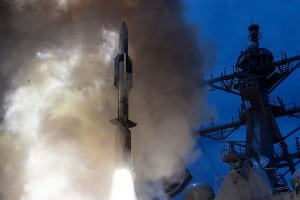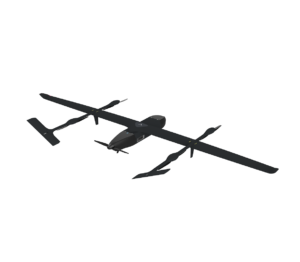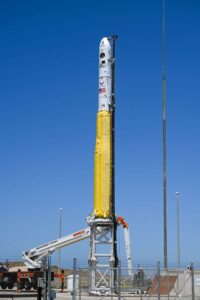
Two Navy SM-6 missiles fired off a ship successfully engaged targets after being launched using targeting information provided by another vessel as part of the development of “engage on remote” capabilities, the manufacturer of the SM-6, Raytheon [RTN], said Friday. The Standard Missile-6 interceptor fired off a cruiser, the USS Chancellorsville (CG-62), before the Aegis ship was able to see them with its own radar while using data provided by a nearby Aegis destroyer, the USS Sampson (DDG-102), Raytheon said.…













